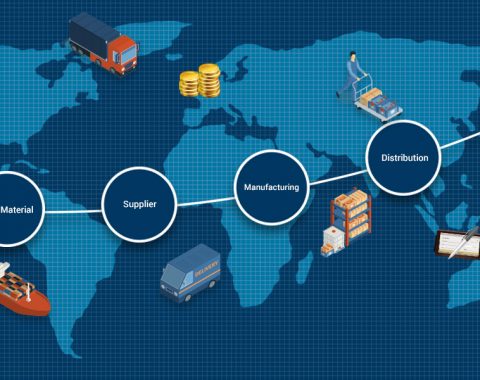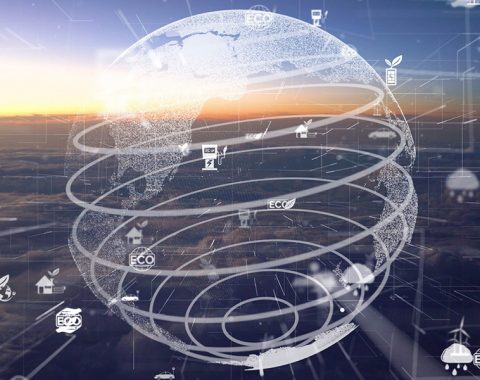As digital technologies continue to break new grounds and the complexity of business-to-business transactions continues to grow complex, it is becoming increasingly clear that only EDI is not enough to meet the changing requirements of your business.
By combining EDI with a state-of-the-art B2B integration solution, you can work and trade with your customers and suppliers much more effectively. If you’re thinking about scaling your business, adopting a B2B integration solution should be a primary goal. While EDI is widely used for interactions, a modern B2B integration works with a set of innovative features that cater to different business requirements.
A B2B integration can bring several benefits to your business. For instance, a B2B application that is integrated with your ERP can bring improved visibility of the information flowing between these systems and higher quality information entering ERP due to less manual reworking of data.
Most businesses today are midway into the integration journey. According to an SCM World survey, 72% of companies that have adopted B2B integration have reduced transaction processing costs by 20% or more. As per a McKinsey estimate, companies with highly digitized supply chains can expect to boost annual growth of earnings by 3.2% and annual revenue growth by 2.3%.
But before we talk more about the various benefits you can gain from deploying a B2B integration solution, let’s understand what it entails.
How does B2Bi help?
Business-to-business integration (B2Bi) simply means introducing automation in day-to-day business processes and communication between two or more organizations. B2Bi helps organizations and individuals work and trade more effectively with their customers, suppliers, and business partners by automating key business processes.
In the world taken over by digital technologies, companies are realizing slow, inept, error-prone manual processing of information is not sustainable in the long run. Disparate and siloed technologies make communication difficult.
The current business world requires fast, effective, and reliable ways to connect, collaborate, and communicate with customers, partners, suppliers, and vendors.
What is B2B integration?
Every business has a unique way of communicating with its stakeholders. This entails a diverse mix of systems, cloud, and applications that require various formats, B2B protocols, and security and governance considerations. With B2Bi, these disparate technologies communicate with each other, making the exchange of business-critical information fast and seamless.
What is EDI?
Electronic Data Interchange (EDI) can be simply defined as the virtual exchange of data and files between trading partners using a standard format.
In EDI transactions, information is transferred directly from a computer application in one organization to a computer application in another. The EDI standards set by the stakeholders define the location and order of information in a document format. With this automated sharing of information, data can be transferred rapidly instead of the days or weeks required with paper documents or other methods.
EDI has its own benefits
Improved Timelines
EDI transfer enables organizations with real-time processing and eliminates the need for manual transfer of information.
Reduces Errors & Costs
The data entry errors reduce significantly with the automated EDI processes, making the creation of invoices and purchase orders more streamlined and eventually making teams more productive.
Better Turnaround Times
With a streamlined and automated process, it is easier to keep track of all the transactions and stock levels resulting in better turnaround times. With EDI, your business cycles can be sped up by as much as 61%.
Moving beyond EDI and creating better shopping experiences with B2B e-commerce
EDI plays an important role in improving efficiencies across businesses. But B2B e-commerce is growing beyond expectations through e-commerce sites, log-in portals, and marketplaces. This has led many EDI-focused businesses to launch a B2B e-commerce channel as well.
Forrester Research had predicted long back that the B2B e-commerce market will generate over $1.1 trillion in sales by 2021, accounting for 13% of all B2B sales.
While EDI has proven to be of great value to businesses for large and recurring orders, processing orders digitally and automatically enhancing speed, accuracy, and efficiency, B2B commerce tends to deal with ordering scenarios where products and order management processes may be very complex.
To put it simply, B2B e-commerce comes in where EDI is no longer sufficient.
B2B e-commerce further gives you a platform to communicate with your customers. It allows you to showcase your business catalog to consumers who can educate themselves online, helps market your products, and helps your customers keep track of orders, offers, and other data.
Many companies are expanding their B2B business focusing more on e-commerce technology. Kellogg is one such example where they are launching a B2B e-commerce channel, which includes product purchases and distribution on businesses that are not grocery, like convenience stores. They aim to create a modern ordering experience for their customers with this initiative.
Similarly, the exceptional digital experiences created by stalwarts like Amazon have created stronger expectations among buyers an excellent ordering experience. With B2B e-commerce, companies will be better equipped to understand consumer expectations and create better purchase experiences for them.
Why EDI still matters?
We can go on and on about B2B e-commerce but EDI still has a big role to play in the equation. According to a research report from Digital Commerce 360 B2B, in 2019, EDI accounted for 78.4% ($7.00 trillion) of all B2B electronic sales. It still remains a dominant sales channel in industries ranging from automotive and retail to healthcare and others.
EDI is important in a lot of supply chain processes and its system is optimized for that. Big retail replenishment, logistics and tendering, status notifications for automotive assembly are some examples. It is also highly-efficient for customers who know what they want.
Despite certain limitations, EDI continues to be the preferred means of exchanging documents and transactions between small and large businesses. In the future, EDI will remain highly useful and widely used by enterprises and will emerge as the core document exchange capability to support innovations like the Internet of Things (IoT), blockchain, and artificial intelligence.
What works best?
This isn’t a discussion about B2B commerce vs EDI. They have very different but important roles to play in a business. The best way to formulate better sales and distribution strategy is to bring these two systems together. Combining EDI and e-commerce will help you streamline sales for all your customers while providing a significantly better buying experience for everyone.
For more information on finding the right digital solution for your business, talk to the experts at Monitor Pro. We will help you understand your business requirements and provide modernized solutions to upgrade your business with emerging technologies.


